The 2021 Kawasaki Versys 650 LT pairs Team Green’s engineering capabilities and proven reliability with simplicity in a go-anywhere-anytime platform. This middleweight Versys has been a staple of Kawasaki’s sport-touring lineup since its inception in 2009 and continues to prove its worth.
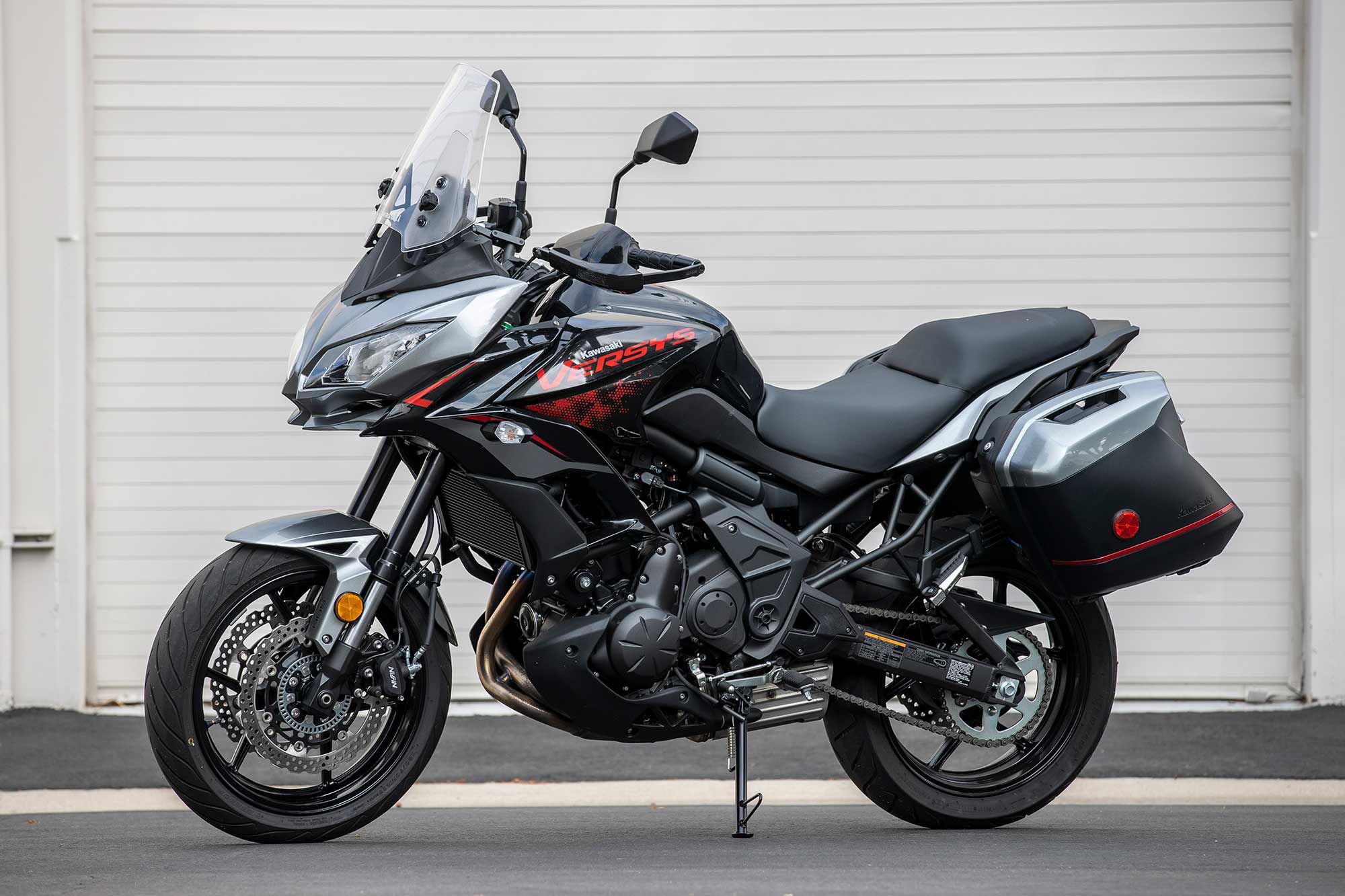
Powered by the same 649cc parallel-twin engine as seen in Kawasaki’s Ninja 650 and Z650 models, the Versys packs a punch of approachable, yet engaging power delivery. Ran on the in-house Motorcyclist dyno, the Versys 650 LT produced 59.6 hp at 8,100 rpm and 41.6 pound-feet of torque at 7,200 rpm. Modest figures, for sure, but the linear delivery and tabletop-flat torque curve makes for tractable power in real-world testing and flexibility in gear selection. It does, however, have its shortcomings. An abrupt on/off throttle transition requires a delicate touch and can become an annoyance in slow-speed scenarios, and the six-speed gearbox requires serious effort to initiate gear changes.
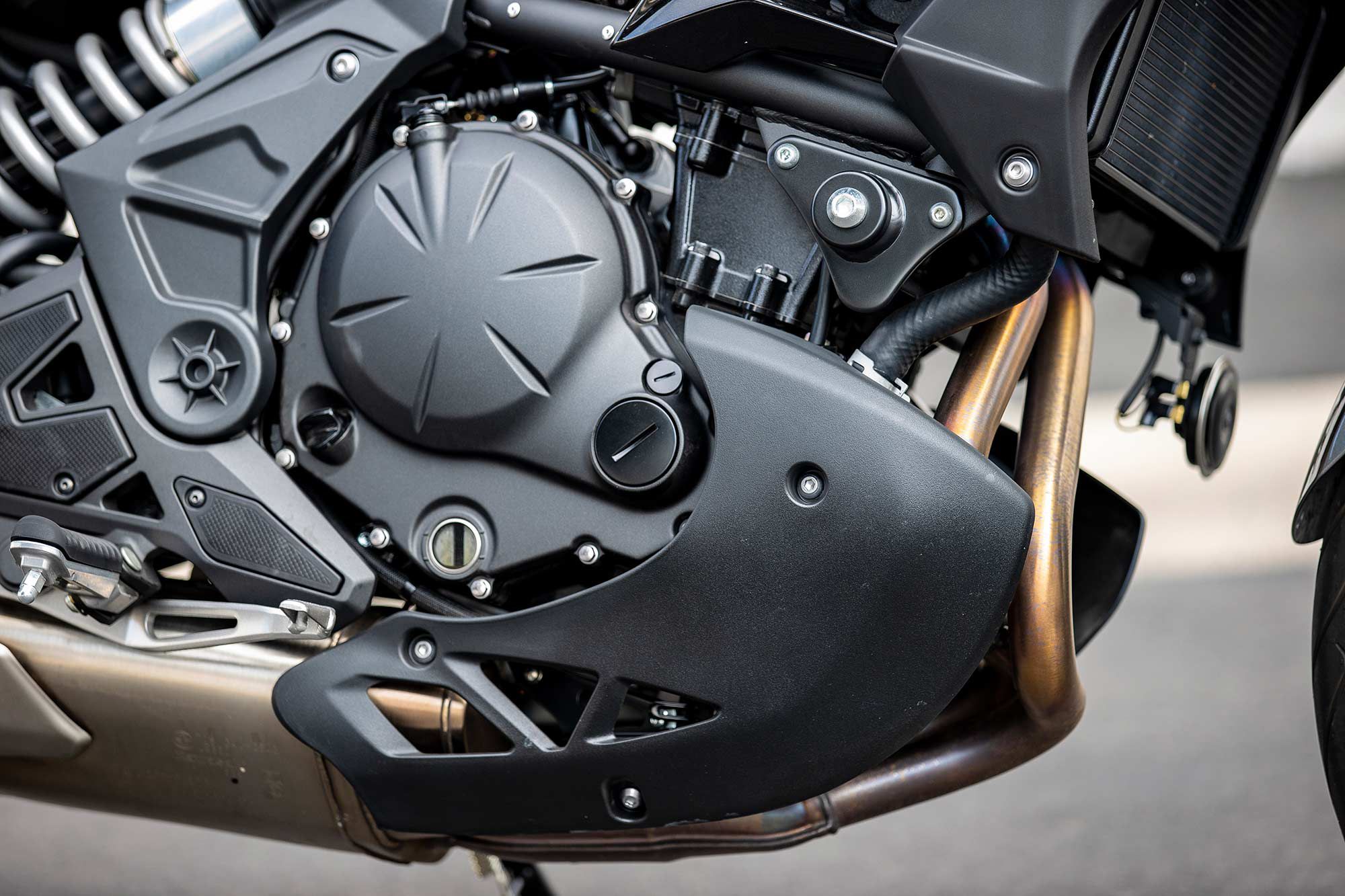
An in-command rider triangle adds to an engaging riding experience aboard the Versys. The reach to the wide, one-piece motocross-style handlebar is relaxed and offers strong leverage, while the relatively sporty footpeg position finds a balance of an aggressive lower-body stance and comfort. Our 5-foot-7 tester found no issue with the measured 33.2-inch seat height, comfortably touching with both feet. The adjustable windscreen offers a smooth pocket of air at highway speeds, though on-the-fly adjustment would be welcomed.
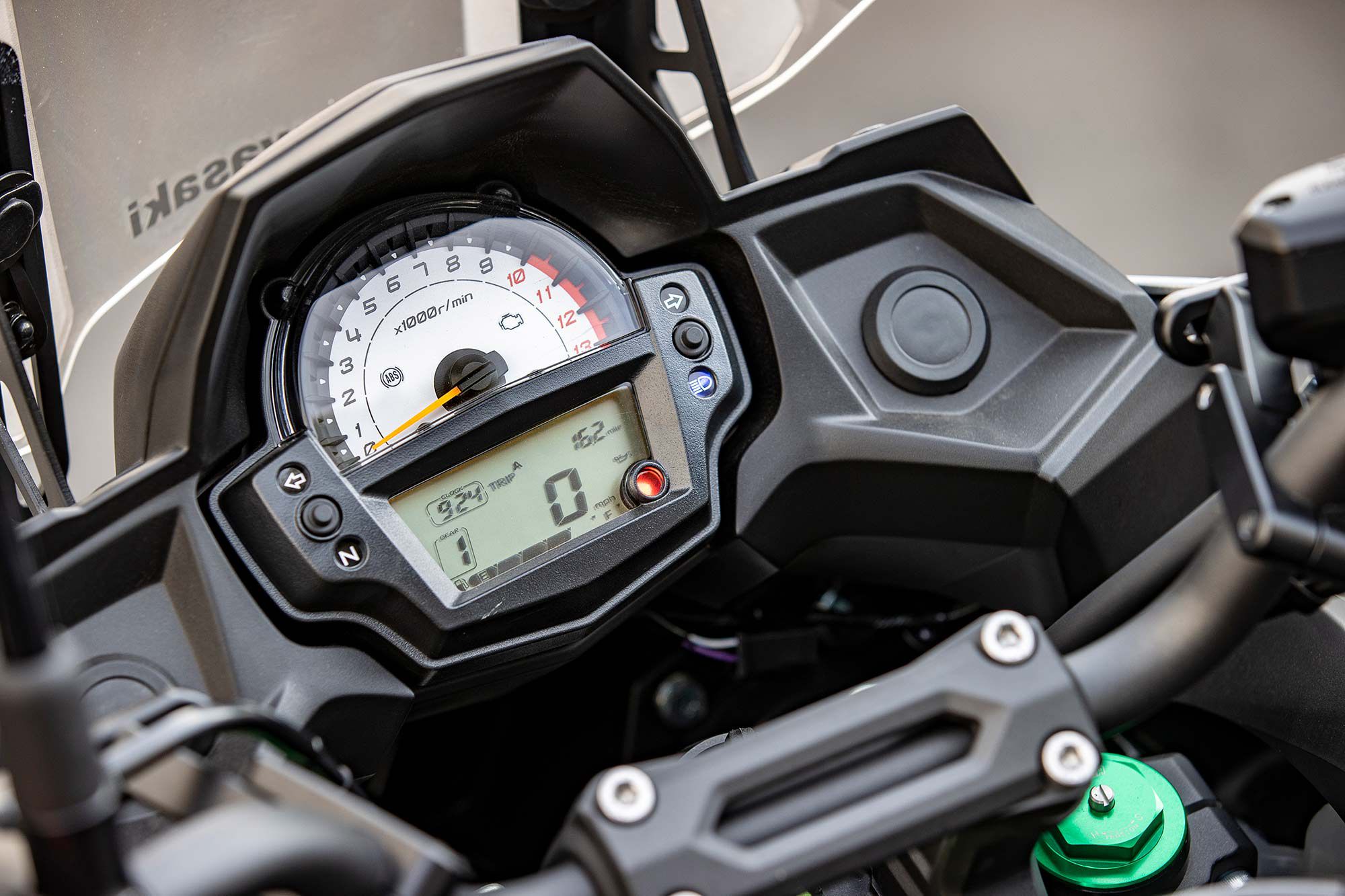
The Versys 650 utilizes a very basic analog tachometer and LCD display to relay important information to the rider. While the simplicity of the setup is appreciated, it is also a sign that the Kawasaki is growing long in the tooth. The last significant update to the Versys was made in 2015.
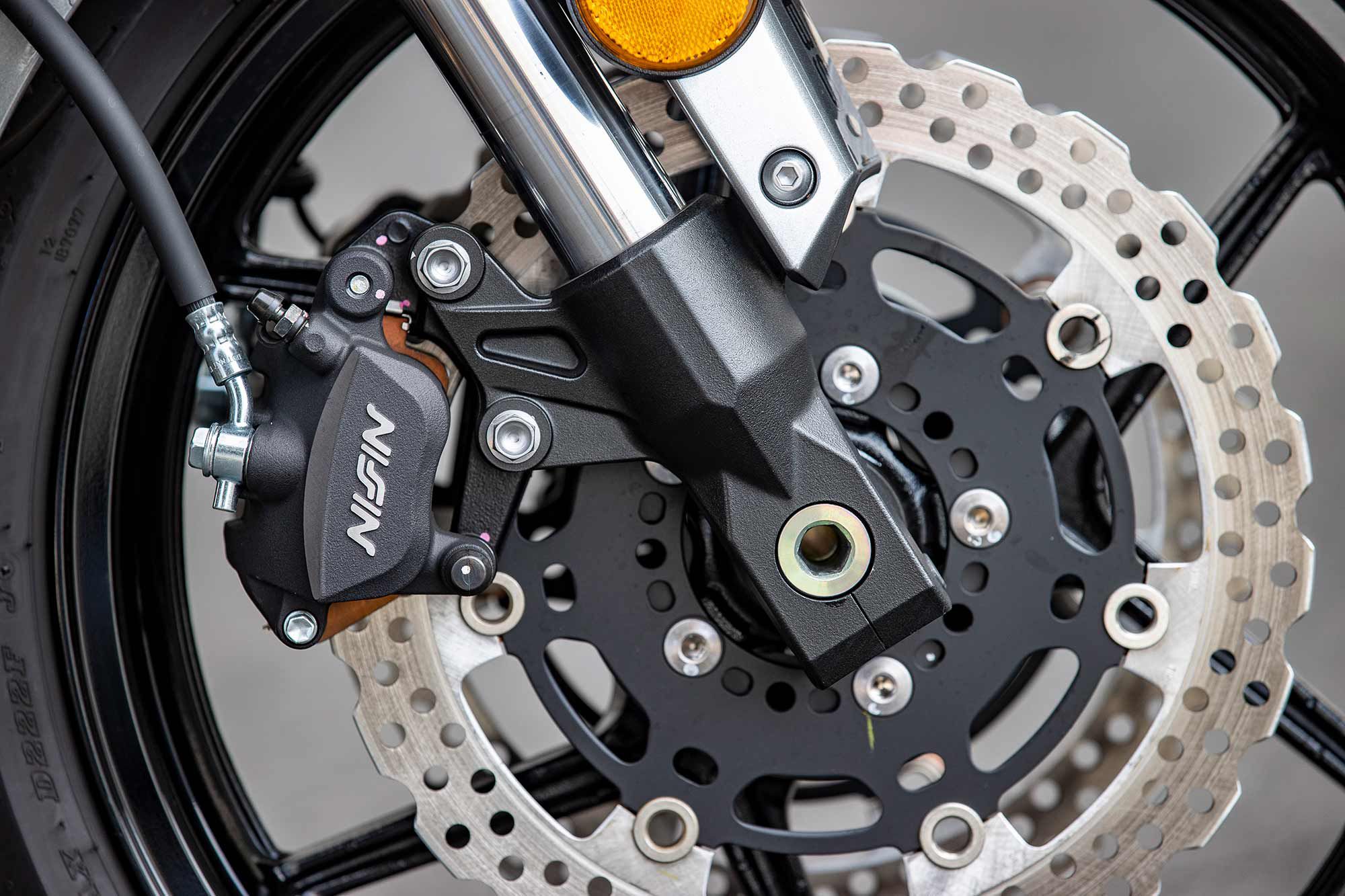
Light steering effort and a well-balanced chassis highlights the Versys 650′s handling. Despite tipping the Motorcyclist scales at a relatively heavy 500 pounds with a full tank of fuel, the Kawasaki is easily maneuverable and only requires light steering effort to shred the canyon roads or navigate dense traffic. The Showa fork is adjustable for spring preload and rebound damping, while the shock features preload adjustability. The pair does a decent job of soaking up the road’s imperfections, but lacks big-hit support for significant bumps and G-out sections. Improved suspension calibration would be a warm welcome.
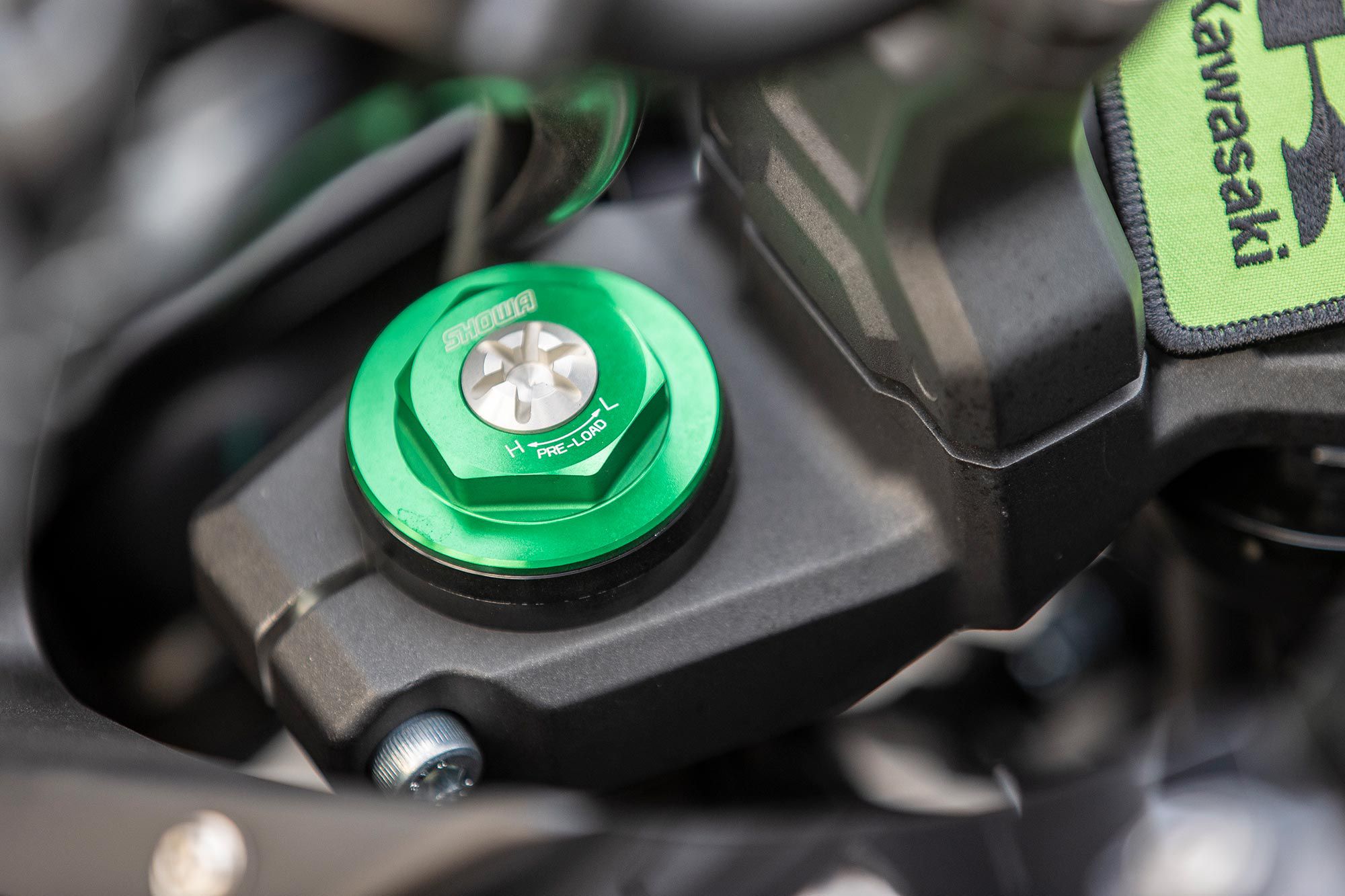
The Versys 650 is brought to a halt via a pair of Nissin two-piston calipers clamping to 300mm discs up front and a single-piston rear caliper. Outright stopping power is adequate and quickly sheds speed, but lacks brake feel at the lever. A swap to an aftermarket brake pad may solve the issue. ABS is standard on all Versys 650 models and offers smooth intervention.
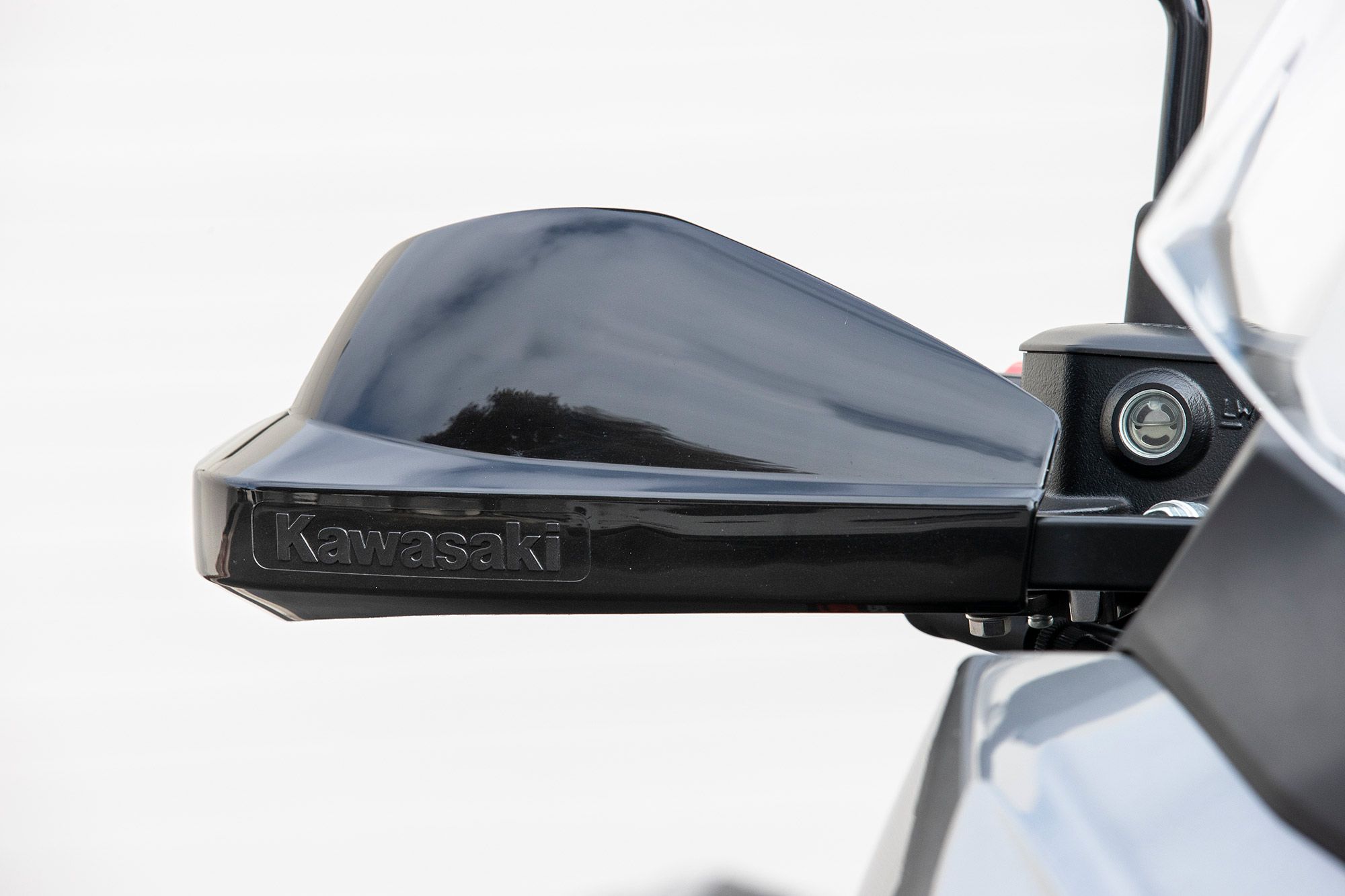
Kawasaki offers the Versys 650 in its base trim ($8,399), as well as the up-spec LT model ($9,299) as tested in this review. The LT is equipped with a set of 28-liter hard saddlebags and OE-equipped hand guards for added wind protection. The saddlebags add a degree of functionality to the Versys with a significant amount of storage and ease of use. Kudos, Team Green.
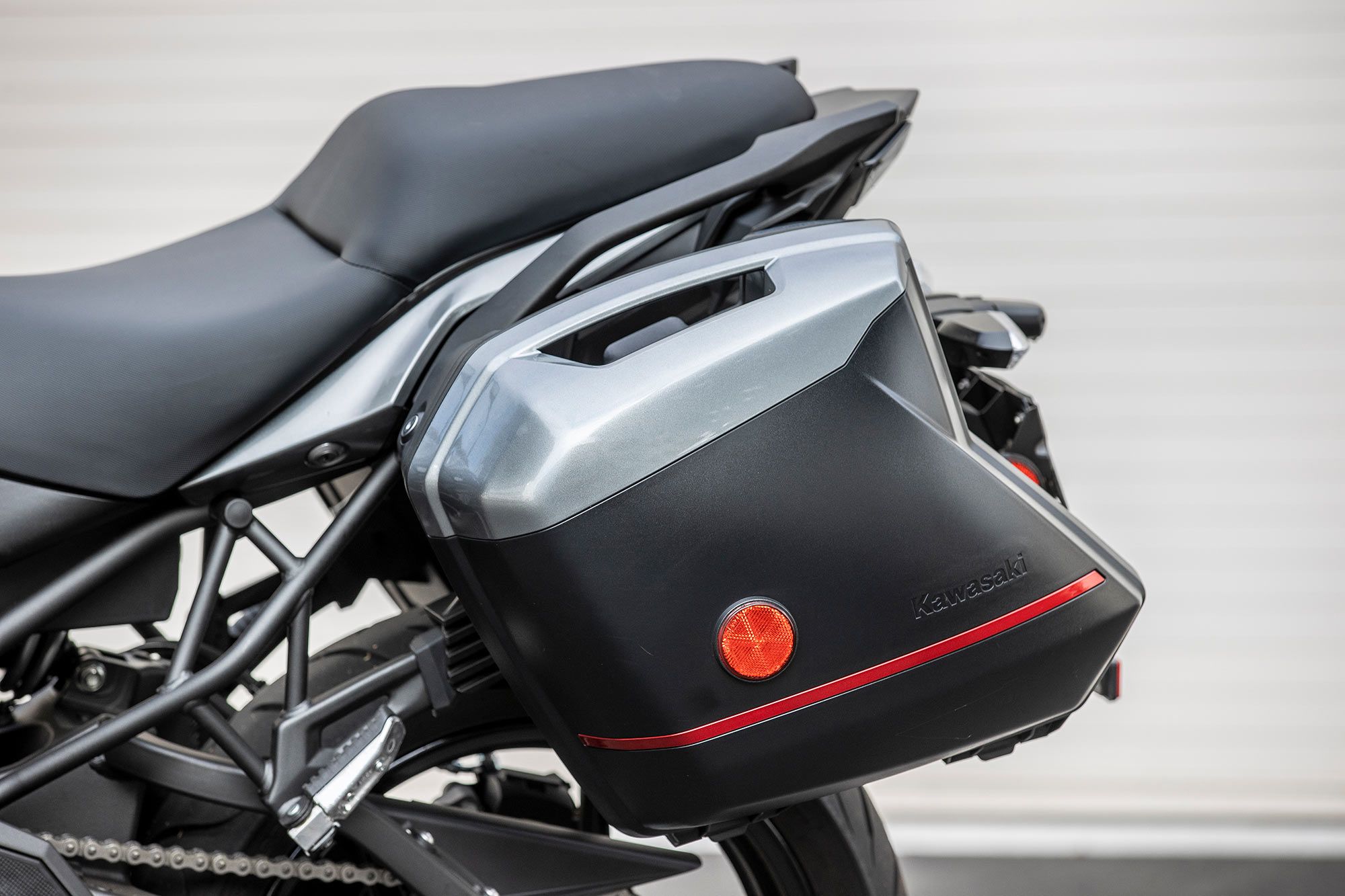
The Kawasaki Versys 650 LT is a tried-and-true middleweight sport-tourer. Sure, the basic build shows its age, but approachable performance and capability reminds us why it has been a staple of Team Green’s lineup for so many years.
Gearbox
Helmet: Shoei RF-SR
Jacket: Dainese Air Flux D1
Pants: Alpinestars Victory Denim
Gloves: Cortech The Bully
Boots: Alpinestars Faster-3 Rideknit
2021 Kawasaki Versys 650 LT Specs
| MSRP: | $9,299 |
| Engine: | DOHC, liquid-cooled parallel twin; 4 valves/cyl. |
| Displacement: | 649cc |
| Bore x Stroke: | 83.0 x 60.0mm |
| Compression Ratio: | 10.8:1 |
| Transmission/Final Drive: | 6-speed/chain |
| Motorcyclist Measured Horsepower: | 59.60 hp @ 8,070 rpm |
| Motorcyclist Measured Torque: | 41.55 lb.-ft. @ 7,210 rpm |
| Fuel System: | DFI w/ Keihin 38mm throttle bodies (2) |
| Clutch: | Wet, multiplate |
| Frame: | Double-pipe perimeter frame |
| Front Suspension: | 41mm Showa fork, rebound and preload adjustable; 5.9 in. travel |
| Rear Suspension: | Single shock, preload adjustable; 5.7 in. travel |
| Front Brake: | Nissin 2-piston calipers, dual 300mm petal discs w/ ABS |
| Rear Brake: | Nissin 1-piston caliper, 250mm petal disc w/ ABS |
| Tires, Front/Rear: | Dunlop Sportmax D222; 120/70-17, 160/60-17 |
| Rake/Trail: | 25.0°/4.3 in. |
| Wheelbase: | 55.7 in. |
| Ground Clearance: | 6.7 in. |
| Motorcyclist Measured Seat Height: | 33.2 in. |
| Fuel Capacity: | 5.5 gal. |
| Motorcyclist Measured Wet Weight: | 500 lb. |
| Contact: | kawasaki.com |
Source: MotorCyclistOnline.com
